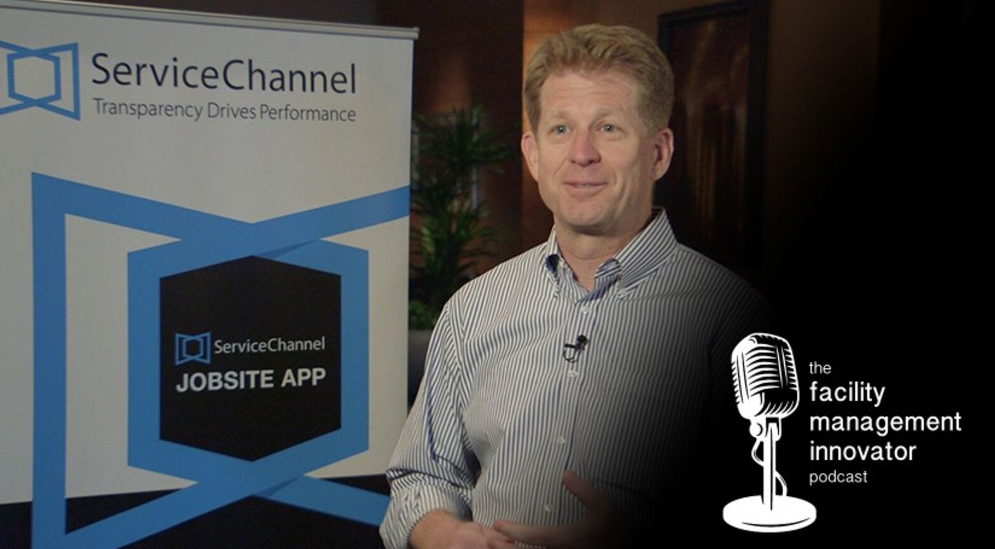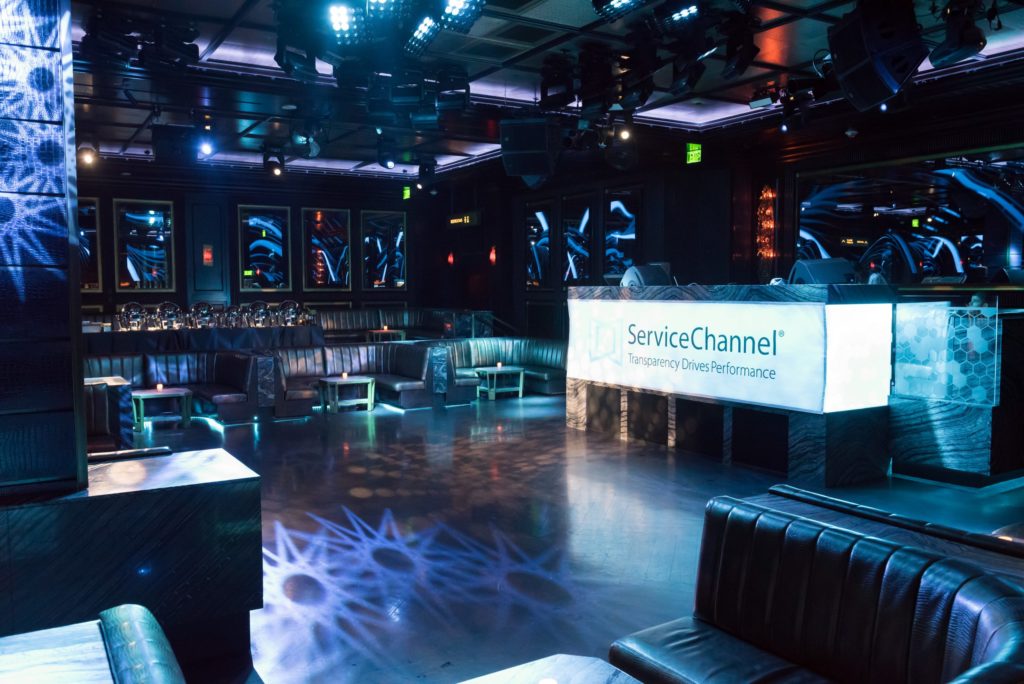6 Sustainable Facility Management Practices to Promote an Eco-Friendly Brand
The COVID-19 pandemic has changed everything about the way we live and work – and, in turn, it has radically changed the ways consumers shop, exercise, and dine out. ServiceChannel is committed to helping our customers through this difficult time in any way we can. Please do not hesitate to reach out with any questions or concerns at [email protected].
Sustainability is a growing concern for business owners around the globe. Today, over 90 percent of CEOs acknowledge that sustainability is fundamental to long-term success, and a growing number of retailers and consumer-facing brands are investing more heavily into sustainable business operations – including their facilities.
There’s more payoff to investing in sustainable technologies than just the obvious energy savings, though. Consumers, especially millennials, are now far more conscious of where they spend their money are more risk-averse than prior generations. Studies have revealed recurrent purchasing patterns that favor sustainable brands – brands that apply environmentally-friendly manufacturing practices, exercise ethical business standards, and whose sustainable message is clearly manifested via the omnichannel purchasing experience.
We’ve previously touched on a few practical ways that facilities management can directly influence the sustainability of their buildings, such as cutting down on overhead costs, reducing energy consumption, and prolonging the life assets they manage. In this blog, we’ll discuss more narrowly how FM s can play a role in sustainable branding: In other words, how to maintain and enhance the retail environment to reflect your brand’s commitment to sustainability.
How and Why to “Go Green” Within Your Retail and Restaurant Facilities
Most people, when asked for a definition of the term ‘sustainability,’ might talk about renewable energy sources, ethical agriculture, recycling, or other widespread initiatives. The Worldwide Fund for Nature explains it more simply: Improving the quality of human life while living within the carrying capacity of supporting ecosystems. This is an inherently powerful value proposition.
It makes sense, therefore, that sustainable brands are now earning more consumer dollars than their non-environmentally conscious competitors. Sustainable restaurants, too, are moving up the ladder. According to recent research by Nielsen, almost half (48 percent) of U.S. consumers would “definitely or probably change their consumption habits to reduce their impact on the environment.” It’s expected that, by 2021, shoppers will spend up to $150 billion on sustainable fast-moving consumer goods.
It’s not just about the labels on the products, though, nor the marketing messages on your website and social media that promote your eco-friendly manufacturing or sourcing processes. The built environment of your store, restaurant, or retail space must reflect your commitment to sustainability from the moment a customer crosses the threshold. What does this look like? Take fast casual salad chain Sweetgreen as an example.
Sweetgreen was born with a mission to connect communities to local and sustainably grown food – food that tastes as good as it is good for you. The brand has been incredibly successful, valued at an estimated $1 billion as of 2019. Their physical locations are set up intelligently with subtle design features that reflect the brand’s commitment to going green. While Sweetgreen’s 100+ locations across the United States are each unique, there are a few key similarities to note:
- Each location tends to have big windows that let in tons of natural light, along with energy-efficient interior lighting and a clean, modern design
- Bathrooms are fitted with auto-shutoff timers for lights and energy-efficient hand dryers
- Surfaces are decorated with an eclectic selection of plants (or, in some cases, vases of fresh flowers)
- Reusable (or recyclable) shopping bags are provided with to-go orders
- A seasonally updated chalkboard features the local farms and producers from which each ingredient is sourced
- A multi-purpose compost/recycling/garbage bin sits near the exit, explaining which items from the chain are compostable – almost everything, as it turns out, is compostable
- Locations are kept immaculately clean, even during peak hours
- An open kitchen allows customers to watch as ingredients are cleaned and prepped from scratch
Imagine the same Sweetgreen concept dropped into a different environment: For instance, inside an outdated dated fast food chain with flickering ceiling lights, plastic furnishings, and cheap tile floors. It simply wouldn’t work. Customers wouldn’t “feel” the brand’s commitment to sustainability because it would be obvious that the physical space is not maintained as such. This is why sustainable facilities management matters – and why store atmosphere plays such a critical role in green branding initiatives.
Promote Your Sustainable Brand with These 6 Facility Management Practices
Ready to give your stores an eco-friendly facelift? In order to reflect your commitment to sustainability within your facilities themselves, incorporate a few of the following strategies into your existing FM operations.

1. Purchase Energy-Efficient Equipment
From HVAC systems to kitchen equipment and back-office necessities (like printers and fax machines), there are plenty of energy-efficient commercial models on the market today, and they’re becoming more affordable every year.
Do your research when a critical asset needs replacing: Rather than buying the same make and model, look for a newer option with an Energy Star certification. These units are approximately 6 percent more efficient than standard equipment and can save your business over $2,000 during the lifetime of the product.
2. Employ Passive Solar Heating
Passive solar heating takes advantage of the built environment to trap, store, or retain solar energy – the heat produced by that afternoon light streaming through your storefront windows. While you may need to do some remodeling in order to capitalize on passive solar heating, simply installing brick walls or special tile floors that are designed to retain heat can save thousands of dollars and significantly reduce energy consumption during the cold winter months.
If you’re lucky enough to have south-facing windows, take advantage of them – and skylights are another worthwhile investment to consider. Not only will you cut heating costs, but a bright, naturally lit store environment tends to be more inviting to customers. Plus, lots of natural light means thriving indoor plants, which themselves are demonstrative of a green, sustainable brand.
3. Introduce More Plants Indoors and Outdoors
Studies have shown that indoor plant life can improve your mood and even boost energy – but for a sustainable branding initiative, they present an even more powerful, symbolic benefit. Simply by featuring healthy, thriving plants within the retail environment (and outside), customers are more likely to perceive your commitment to sustainability elsewhere in your business as valid.
A green wall can even improve indoor air quality while also serving as a unique, memorable focal point among your store or restaurant’s décor. Make sure that plant care and landscaping is included in your preventive maintenance strategy: regular watering and pruning by a specialist will keep your green spaces looking as they should.
4. Upgrade Your Lighting
Incandescent and fluorescent light bulbs should be considered a thing of the past. Brighten up your sales floor and increase energy savings by switching to LED or CFL lighting, both of which last longer and produce the same light output with far less energy consumption than traditional bulbs.
While it may seem like a significant investment at the outset (LED lights are a bit pricier than what you might be used to seeing), they’ll pay for themselves within only a matter of years. Plus, LED bulbs won’t suddenly go out when they’ve reached the end of their lifespan – they fade out gradually, meaning your customers are less likely to witness any unexpected outages.
Want to go one step further? Invest in sunlight and/or motion sensors that switch lights off when they’re not needed.
5. Use Salvaged Materials and Fixtures
When it comes time to refresh your retail space or replace broken furniture or fixtures, don’t immediately place an order at the nearest warehouse. FMs should work with applicable managers and creative directors to source salvaged materials whenever possible. This both contributes to your brand’s sustainable mission (preventing another useful object from ending up in a landfill) and adds unique character to the retail environment.
Outdoor retailer Patagonia sets an excellent example: Their store in Victoria, Canada was built using sustainable construction methods and features reclaimed wooden shelves, displays, and feature walls throughout – all sourced either from Pacific Ocean wood wastage or leftover materials from the construction of a local yacht club.
6. Embrace Preventive Maintenance Across Locations
A well-thought-out preventive maintenance strategy has a plethora of benefits: When businesses keep tabs on assets across each of their retail locations, setting up planned and proactive maintenance according to set timelines, they’ll not only save money on emergency repairs – they’ll also be better able to keep assets performing at full capacity, minimizing wasted energy and resources.
Also keep in mind that maintaining assets for as long as possible – i.e. their maximum lifecycle – is better for the environment. Tossing out a major piece of equipment that, had it been properly maintained, could have lasted several more years is an unfortunate waste. Avoid this fate by investing in asset management software, such as a Service Automation platform, that simplifies the planned maintenance scheduling process.
Embrace preventive maintenance and you’ll not only reduce your carbon footprint, but customers will benefit from a more enjoyable shopping experience and your “green,” sustainable brand image will be more consistently upheld.
Final Thoughts
For most green brands, the sustainable practices that have the greatest overall impact are those that take place behind the scenes: At the manufacturing plant, during store construction, or inside the warehouse. Yet your customers only come face-to-face with your purported sustainable mission when they cross the threshold at a brick-and-mortar store. This means that every detail inside these built environments should reflect that same level of dedication to your mission – from the windows and light fixtures to the landscaping, signage, and décor.
When launching a sustainable branding initiative, it’s okay to start small. Make sure your facilities are, at a minimum, operating under a preventive maintenance program and that all locations are being held to the same standard of cleanliness and efficiency. From there, you can begin to work on the bigger changes – such as solar panels or IoT-enabled devices – gradually transforming energy-sucking buildings into beautiful, self-sustaining ecosystems.



